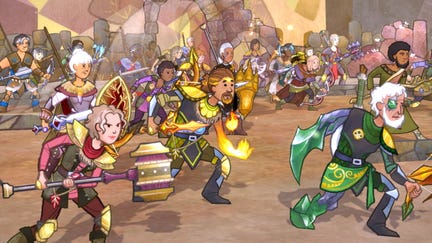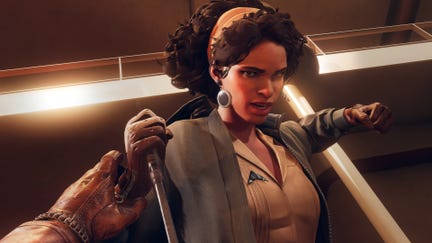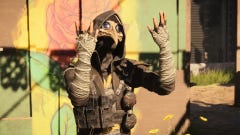Our 24 favourite games of 2021
Unwrapping our games of the year
Happy New Year, folks! 2021 may be behind us now, but before we start looking ahead to all the hip new video games coming our way this year, we thought it was as good a time as any to look back at all of our favourites from the last twelve months. If you kept up to date with our hale and healthy Advent Calendar over the course of December, then you'll already know our game of the year selections for 2021, but this post gathers all those lovely words and entries together into one handy list.
For ease of use, you can find the final rankings below (in order, as voted for by the RPS editorial team), as well as some links to hop straight to the game in question, just in case your scrolling finger hasn't quite woken up yet (there are a lot of words here). Alternatively, you can carry on scrolling to read the whole thing, or do things the old fashioned way by opening each door of the Advent Calendar one by one. Enjoy!
Our games of the year 2021
- Chivalry 2
- Boyfriend Dungeon
- Unpacking
- Before Your Eyes
- Age Of Empires 4
- Marvel's Guardians Of The Galaxy
- Super Auto Pets
- Dyson Sphere Program
- Webbed
- Slipways
- Dorfromantik
- Valheim
- Death's Door
- The Forgotten City
- Humankind
- Outer Wilds: Echoes Of The Eye
- Forza Horizon 5
- The Great Ace Attorney Chronicles
- Hitman 3
- Psychonauts 2
- Resident Evil Village
- Wildermyth
- Deathloop
- Inscryption
24. Chivalry 2
Matt Cox: A sword fight gets so much more intimate than a shootout. I’ve lost count of the multiplayer FPSes where death comes instantly and often, and usually at the hand of whoever happens to spot the other first. Swords aren’t like that. They’re personal, they require an exchange. Every blow has to be fought for, every victory earned - and there’s so much more to it than clicking in the right place quickly.
Chivalry 2 understands this, because Chivalry 2 has separate buttons for jabbing, kicking, thrusting, slashing, overhead smashing and weapon-specific murderising. You can dash. You can duck. You can (and should) bellow out war cries to inspire your allies and instill fear in your enemies. The chopping goes much deeper than in Chivalry the first, and perhaps even a smidge deeper than in Mordhau.

This is certainly where chopping gets the glossiest, and the most bombastic. Castle gates crumble under cannon fire, crenellations turn to dust, and villages burn while huge ship masts shatter to the ground in Battlefield-worthy spectacle. The biggest clashes take place across sprawling, varied multi-stage objectives, often rewarding the best player on one team the chance to take on a special pivotal role, like surviving as a big Duke or fleeing as a massive bare-chested prisoner. Even if you don’t want to delve into mastering fancy swordplay, it’s worth coming for the action scenes.
Of course, I am here to master fancy swordplay, and combat I initially dismissed as overly forgiving compared to Mordhau turns out to have its advantages. Chivalry 2's health pools are vast, blocking is near infinite, and everyone moves just a touch slower. That means you get fewer jaw-dropping rampages where a single combatant slays everyone around them with a few well judged strikes, but it also means everyone - squires and hulking knights alike - gets to stay alive a lot longer. The slower pace actually extends those electrically overwhelming moments where you’re surrounded, flitting between foes like Zorro on musketeer catnip, somehow clinging on to life. The highs aren’t as high, but they come more often and last longer when they do.
Chivalry 2 is also, of course, very silly. One of the maps starts with randomly selected players fighting an honourable duel in a courtyard, while scores of nobles spawn in on either side clutching harps, roosters and bread rolls, before immediately pelting them at each other’s heads. There are dozens of custom voice lines that let you acknowledge and elevate almost any situation, whether you’re protecting an enemy who’s decided he wants to be friends, or rubbing in the fact that you just chained an awesome matrix dodge into a feint into a surprise accelerated overhead. You can get your mates to literally catapult you behind enemy lines. I don’t know what else to tell you.
It’s replaced Mordhau as my go to chop ‘em up, which is a remarkable feat. Plenty of the games in this calendar serve as impressive experiences that you’ll remember fondly, but Chivalry 2’s got staying power and that counts for something. I’m still playing it, six months on. Right now I’m in a phase of chucking my shield at people while pretending to be Captain America, repeatedly catching it in mid-air while shouting in chat about how all those who face my mighty shield must yield. What more could a chop fan ask for?
23. Boyfriend Dungeon
Rebecca: I may have two hands, but alas I only have the one brain, so realistically I can only play one video game at a time. Ordinarily I'm forced to choose between two of my favourite gameplay styles: bludgeoning my enemies in close-quarters melee combat, or falling hopelessly in love with fictional characters.
Enter Boyfriend Dungeon, which actively encourages you to do both those things at once! And it's not just a case of optional romance cut-scenes with your party members when you're safely out of combat. No, Boyfriend Dungeon properly integrates the hacky-slashy bits with the smoochy bits in an innovative way: by having you romance your weapons.
Dating sim composite games are a particular weakness of mine, so a visual novel-slash-dungeon crawler with dateable shapeshifting weapon-people was on my Steam wishlist about a femtosecond after I found out it was a thing. That was literal years ago now, but when the game finally came out in August, it did not disappoint me.
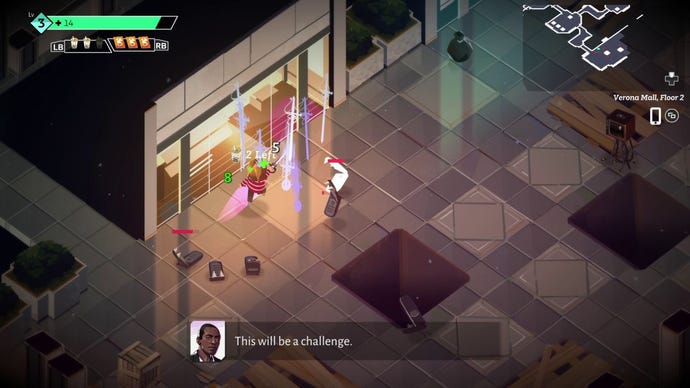
The combat in Boyfriend Dungeon isn't particularly hard to master, but it's good mindless smashy fun if you didn't go in looking for a challenge on a par with Hades. Let's be honest: this is definitely a dungeon crawler designed to be accessible to dating sim fans, rather than the other way around. But if that's the experience you go in for, then the only real fault I think you'll find with Boyfriend Dungeon is that there's not enough of it.
Kitfox Games have announced plans for DLC that will add more content to both halves of the game, but for now you have to be content with crawling just two dunjes, which admittedly can get played out before you've quite reached the end of the story. Realistically, though, the dunjes in this game were never the stars of the show: that was always going to be the sexy swords.
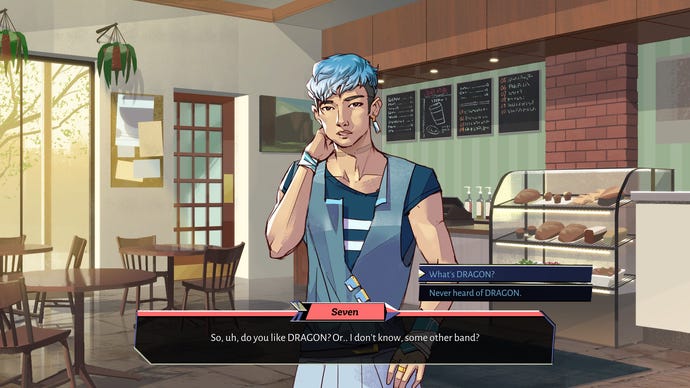
For me, the compelling writing and well-rounded characters were what elevated Boyfriend Dungeon from a fun diversion with an interesting gag as its central premise, to one of my favourite games of the year. Everyone I know who's played it came away with some strong feelings about their weapon of choice, which in my opinion is the sign that a game with visual novel elements has done its job well.
In my case, despite knowing absolutely nothing about K-pop and only slightly more about Star Wars, by the end of the game I'd fallen hard for blue-haired maknae idol and part-time lasersaber Seven. I won't spoil anything, but suffice to say his story impressed me by handling a sensitive topic close to my heart with refreshing nuance. His romance route felt understated and genuine, and grabbed me by the feels to the point where I found I couldn't picture choosing anyone else as my partner/weapon for the endgame dunj. He was truly perfect boyfriend material. He just wanted to cuddle on the couch and watch horror films instead of going nightclubbing on our dates, and if I pulled off a hit combo he could chain lightning across six of my enemies at once. Swoon.
Alice Bee: One of the characters in this sexts you about, like, his blade. End of pitch.
22. Unpacking
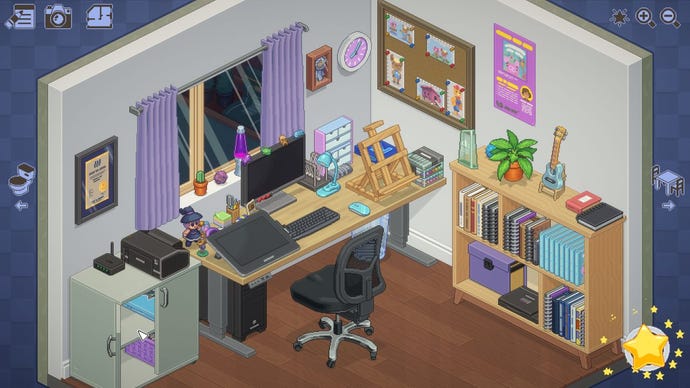
Alice Bee: Most people who play Unpacking really enjoy it and think, you know, it's a fun, cute game about unpacking boxes each time you move house. Until they reach one bit. It's the bit with the diploma. You'll know it when you see it. And you'll go, "Ohhhh. Oh no. Oh nooooo." And chances are you'll recognise a moment like that from your own life.
Unpacking is great for a couple of reasons. One is that unpacking in real life sucks the big one, but unpacking (the verb) in Unpacking (the noun) is a beautiful game. Every box is a rustling paper cave of delights, full of little pixelated treasures. Plates that chink together as you stack them in the kitchen. Little souvenir models collected on trips abroad. Jewel-bright t-shirts and pyjamas that hang in your wardrobe or fold up perfectly to slip under your pillow.
In each level you must unpack a life - the same life, as it grows and matures and collects new possessions, but gets rid of others - and put everything away. Put the towels and shampoo in the bathroom and the clothes in the wardobe, and the cleaning products under the kitchen sink. That's the puzzle-y bit of it, I suppose, 'cos you can't unpack the next move until you've got the previous one mostly right.
But then there's the other side of things. It's how you get to know the person who you're unpacking. You see their favourite mug go with them down the years. The changes to their fashion sense. The kitchen utensils they accrue over time. You take them through highs and lows - bad relationships, fun flat shares, moving back in with their parents, getting their own place. You're there for it all, deciding which cupboard is going to be the one were we keep the drinking glasses.
I think when people talk about environmental storytelling, they shouldn't be arguing about whether or not grafitti saying, "I HATE ZOMBIES!" or, "WHO ARE THE REAL MONSTERS?!" Instead, they should be thinking about Unpacking. They should think about what it means in one level when you open a box and take out a certain photo that you recognise from before. A moment that is an emotional gut punch, but occupies such a very small part of the game. Or how it feels to have to push some display glassware together to make room for your favourite books. What it's like to see your old childhood bedroom taken up by a crafting desk. The triumph when you first move into a place that has a whole room for your office.
Katharine: There is no greater villain in games in 2021 than Unpacking's first boyfriend. Just move your shoes over, goddamnit!
21. Before Your Eyes
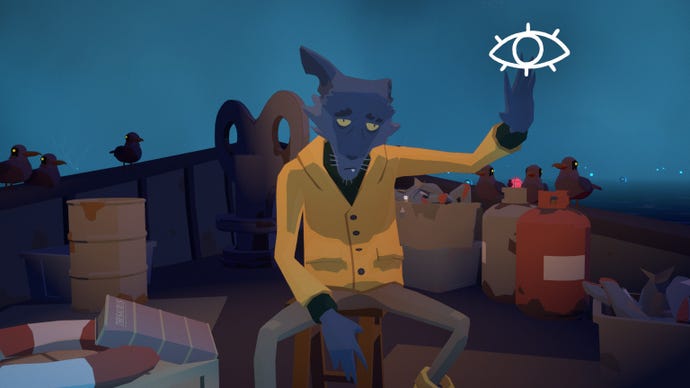
Ed: Writing about Before Your Eyes is hard. Personally, I find it easier just to have a little cry about it. That way you don’t spoil the story for anyone, and it warns those around you of the catastrophic emotional impact it can have on a person. But I’ll try my best, because this game is magic. Like seriously, you blink in real life and the game reacts. Woah.
Before Your Eyes is a first-person journey through the afterlife. You start aboard a haggard wolf-man's rowboat, who, it turns out, is the mythical Ferryman of this mysterious underworld. Connect the game up to your webcam (mouse clicks also work, if you don’t want to) and it’ll give you the power to push time forwards with your real-life blinks. In just a few snaps, the rowboat disappears and you’re whisked away to another realm entirely.
You can’t advance time at any point during the game, mind. It’s only at specific points where blinking will move things on. Still, the game picks and chooses them wisely. Occasionally you’ll even have to make a few decisions along the way... And I can’t divulge too much more information. It would be cruel of me to spoil the story, as even just the littlest snippet could unravel the whole experience for you. This is a game you want to approach sight unseen, which is rather ironic, isn’t it?
Just know that this game won’t waste your time. In fact, there are plenty of moments where you desperately fight the next blink because you want to freeze time in its place and cling onto the present. The longer you... just... hold... on, the longer you get to glean more information or simply soak in the moment. Sometimes, you can’t help but blink and poof!, you move on, whether you like it or not. It's as much an exercise in self-control as it is a well-executed story, but I wouldn’t say it’s frustrating. If anything, I like how its use of an automatic bodily response captures memory recall so faithfully.
Before Your Eyes isn’t only one of 2021’s best games because it combines a tear-jerking story with a cool webcam gimmick. It’s also special because it fills you with this urge to tell people about it. Even those who don’t care about video games or think of them as lazy vessels for violence. There’s a sort of pride you get as a fan, when you can recommend a game wholeheartedly to someone who’s a bit on the fence and watch their perspective shift as excited messages flood your lock screen.
This is what Before Your Eyes is all about to me. An emotional rollercoaster that’s built for practically anyone, whether they’re into games or not. And it’s only roughly one hour and a half long, so it’s doable in a single sitting. This makes it a great stocking filler and the perfect advert for video games after the figgy pudding’s been had. Crack out the laptop, then watch as your confused family’s mood goes from jovial to teary, and proclaim, “That’s the power of video games!” like a festive Goeff Keighley. What better way to have a very merry Christmas?
20. Age Of Empires 4
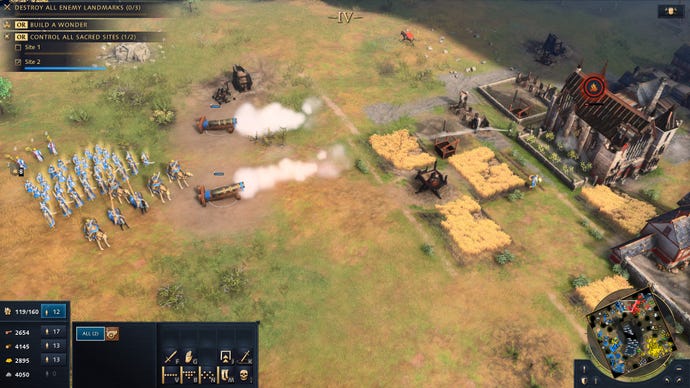
Nate: To speak in the broadest possible terms, Age Of Empires 4 was an all-singing, all-lancing, megabudget remake of legendary medieval batterfest Age Of Empires 2. Franchise newcomers Relic Entertainment lifted the core right out of the 1999 RTS, hooked it up to a brand new game with an aesthetic best described as Time Team directed by Michael Bay, and slapped it onto our digital plates with a blast of heraldry-draped trumpets.
So, you’re thinking, it’s a remake, right? Seems par for the course in strategy game development, after all. Just as in the movie business, it’s a rare studio these days that risks an adventure into fresh IP, when some beloved but mouldering carcass can be reanimated instead. Indeed, many saw AoE4 as just such a feat of necromancy, praising it as a solid old-school RTS, but sighing a bit at Relic’s reluctance to innovate on the classic Age feature set.
But as far as I’m concerned, Age Of Empires 4 ain’t a remake. It’s not even a sequel, really. It’s a bloody exorcism, is what it is. To back up this bizarre take somewhat, let me remind you that I spent most of 2020 in a state you could reasonably call enslaved to Age Of Empires 2, following the launch of its Definitive Edition. I wasn’t alone, either. Last year saw hundreds of thousands of people collapse in thrall to this twenty-year old game, and while many of its devotees were newcomers - some younger than AoE2 itself - the first wave of pilgrims were those, like me, who had been lured in by nostalgia.
It was the best time I have ever had with a video game. It was the worst time I have ever had with a video game. I spent far longer with AoE2 than I ever did in the totality of its original lifespan. Why was it such an intense experience? Well, I suppose I was stuck in my house during a plague, and slowly losing my mind. But beyond that, there was just something really potently weird about applying a brain attuned to modern strategy games, to a game from the 1990s.
There’s just so much constant, needless activity involved in playing AoE2 to any kind of standard. Even with the concessions to reason added by the Definitive Edition, the game is a glowering, obdurate brute, requiring four clicks where one might suffice in a modern RTS, and punishing anything short of mentat-calibre focus with a swift and merciless Ghengising of the economy. Victory in such a condition made me feel like an extremely limited god, and defeat, a simpleton.

And so to AoE4, which managed to drive all the demon idiosyncracies from AoE2, like Christ forcing pigs to run into a lake, and still - somehow - leave a perfectly solid RTS for the swineherds to play afterwards. That is, genuinely, no mean feat. Relic could so, so easily have thrown the baby out with the bathwater, since AoE2’s baby was its bathwater. The same things which made it maddening made it magical, and one only has to look at Age Of Empires 3 and Age Of Mythology, the two sequels it has already had, to see just how easily lost that magic was.
AoE4 is not, at least in its launch incarnation, “as good” as Age Of Empires 2. But if I’m being honest, it’s a hell of a lot more enjoyable. It’s got built-in documentaries about paint and falcons, for Grond’s sake. It’s got a bloody narrator. And I’ve not once found myself snarling curses at my own reflection in the monitor, after some sweating teenage bastard managed to nail their build order eight seconds before mine, thereby gaining god’s permit to drown me in horses.
Age Of Empires 4 is, when all is said and done, a solid old-school RTS. And from where I’m standing, that’s a fucking miracle. Bravo.
19. Marvel's Guardians Of The Galaxy
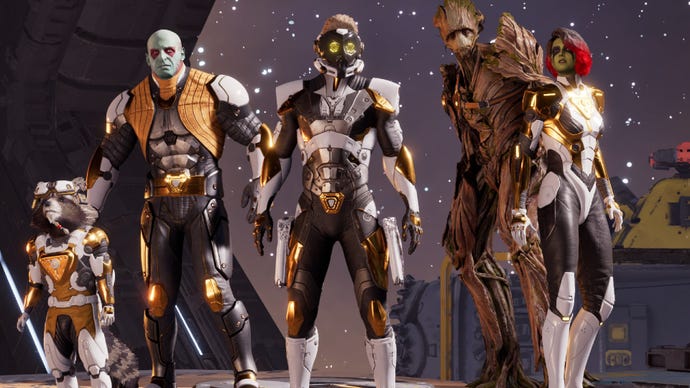
Hayden: I think it’s fair to say I’m the biggest Marvel fan here at RPS. I indulge in reading comics in bed over the weekend and I go to see every movie about five times (thanks, Odeon Limitless!). The Guardians have always been the best for me, though. Their endless wisecracks make me genuinely laugh in a way most things just don’t manage.
In the MCU, the Guardians are defined by these jokes. Sure, there are moments of emotional vulnerability, but two-hour movies just don’t give you the time to dive into these characters as I'd like. Quill and Gamora are very much the focus, while the rest are relegated to the side. Thankfully, Eidos Montreal’s roughly 15-hour jaunt with the Guardians gives them all plenty of time at the forefront, creating my favourite depiction of this crew yet.
There are certainly elements borrowed from the movies. Drax is still an overly-literal alien who can’t grasp a good pun, while Rocket predictably grows from self-centered arse to team player. The quick quips and funny jokes still zip around the Milano, but we also get to explore the grief and pain that unites the Guardians much further, gaining a deeper insight into the team. Oh, and you get to have long convos with Groot, which are unsurprisingly hilarious and adorable. These opportunities allow Eidos Montreal to expand on each character, while also exploring the wider Marvel mythos.
And wow, there is plenty to explore. Guardians Of The Galaxy really dives into the Marvel treasure trove. Sure, you’ll see classic Guardians staples like Knowhere, Thanos, and lots of Nova Corps peeps. But you also get to discover other goodies, including both recent creations and popular characters of old. You’ll step foot on Lamentis, battle the Dweller In Darkness, and maybe even spot Pip the Troll scurrying about in the shadows. There are plenty of references throughout Guardians Of The Galaxy that are just waiting to be found.
So, for a Marvel fan like me, this is a real treat. Hell, you even get to meet Fin Fang Foom. FOOOOM! For those just looking for a fun sci-fi adventure, however, all of these extra details make the universe feel huge - and will hopefully entice you to explore the Marvel universe further (if you need comic or movie recs, ask in the comments or on Twitter; geeky chats are what I do best).
The Guardians don’t just wander around and look at old comic relics, though. They kick names and take ass. You get to fight a delectable array of Marvel denizens and delinquents, with killer moves and banging tunes that make every battle feel like a vibrant scene ripped straight from the movies.
This is helped by the Momentum system, which encourages you to get creative with combat by ranking you after each fight. You raise your Momentum and earn higher ranks by using a variety of attacks as Star-Lord and commanding the other Guardians to do the same. This made me feel like the director of my own awesome movie moments, lining up my toys in slow-mo and then watching them kick ass around me as I blasted baddies from the air.
I’ve wanted to fly around and save the galaxy as Star-Lord for years, and Marvel’s Guardians Of The Galaxy certainly delivers on that comic book fantasy. But it also has an abundance of heart, hilarity, and hectic combat that made this my favourite Guardians experience yet.
18. Super Auto Pets
Alice0: Super Auto Pets is an auto-battler, building on the ideas of games like Dota Auto Chess and Teamfight Tactics where we buy, upgrade, and arrange a team of units then watch hands-off as battles against other players unfold. Here, those 2D battles are simplified to 1D with our teams arranged in a line, and the murderwizards are replaced with cute animals. Sounds simple and looks cheerful, but don't be fooled: it's delightful to master.
It has a wonderful absence of things I don't want in a video game right now: it has no plot to remember between sessions, no grind to catch up on, and no pressure to play at any particular pace. What the auto-battler does have, beneath the simple setup and colourful art, is a complex system of synergies, combos, weaknesses, and opportunities. Like Ollie, I've been delighted discovering this web of interconnected abilities, the theorycrafting behind builds, and having to react as my best-laid plans run into other players' plans and the capricious will of RNG. I've won with mega-buffed teams, I've won with fiendish combos, and I've lost to teams who looked like they shouldn't work at all then revealed tricks which made me laugh aloud.
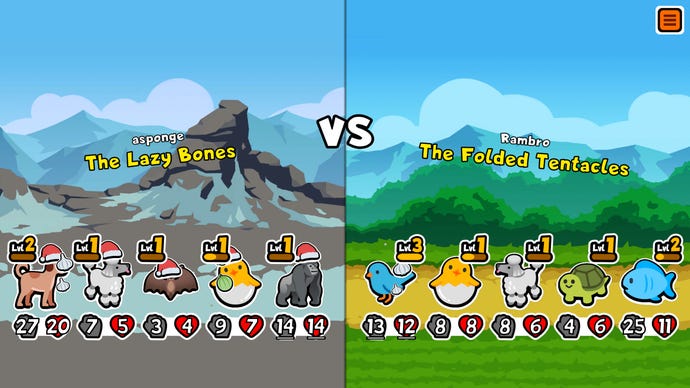
One element I'd like to highlight: how much Super Auto Pets expands on the shopping side of auto-battlers. A pleasing number of abilities and items manipulate the shop, making the financial game sometimes as satisfying as building my animal army. This dovetails nicely with how gentle the pace is. With asychronous matchmaking, it has no round timers, no hurry to buy. I can umm and ahh over decisions as long as I like. I can quit a run in the middle and return to it the next day. Hell, I can even continue that same run on my phone.
It's generous as hell too. The free-to-play base game is plenty to enjoy in itself, and the paid expansion offers no advantage because matchmaking pools are separate by default. Super Auto Pets is both complex and casual, and I appreciate this energy right now.
Ollie: I'm sure there are a great many sentences I've uttered when talking about Super Auto Pets that have never been uttered before by anyone. Gems such as "Jeez, that Dodo-Hippo synergy is amazing", "Nothing makes a Peacock angrier than staring at an Elephant's arse", or "There's always just one fucking Cricket left at the end, isn't there?" stand out in my memory in particular. And all of those were uttered within just my first couple days of playing this adorable and honestly quite ingenious little autobattler.
17. Dyson Sphere Program

Ollie: Automation games have really started to grow now, haven't they? Backpedal a few years and I'd only have been able to name Factorio, and I wouldn't have thought to even call it a genre. Now there are dozens of automation games out there, more releasing every year, and each one desperately trying to put its own spin on the format. I've played many of them now, and I can safely say that Dyson Sphere Program comes the closest to knocking the almighty Factorio off its throne. On certain days, depending on my mood, it may even usurp Factorio altogether.
A new game of Dyson Sphere Program puts you in control of a mech suit which is plopped onto a friendly spherical planet which brings to mind the worlds of The Outer Wilds. Your aim is to gather resources, build factories, research technologies, spread to other planets in your solar system and eventually to other solar systems in your procedurally generated galaxy. All with the lofty aim of creating a Dyson Sphere - a megastructure which can harness the entire energy of a star - that can power your species' virtual reality home forevermore.
It's a ridiculously ambitious idea, but it's more than just an abstract goal. Several elements I just mentioned also introduce some major features and mechanics which turn Dyson Sphere Program into an automation game unlike any other. For starters, everything is done through the mech suit, which you must keep powered by adding fuel of various kinds into the Fuel Chamber. And if you want to expand your horizons (literally), you'll need to upgrade your mech suit so that it can fly around, and escape the atmosphere to travel - literally travel, real-time, no loading screen - to different planets.
Then there are the planets themselves. In Dyson Sphere Program, planets orbit their star in real-time, which means sometimes planets are near each other, and other times they're very far away. That becomes important when you start setting up transportation of resources across different planets. You'll also need to pay attention to each planet, because it's not just their available ores and resources that set them apart from the rest. Some planets are far better for solar energy or wind energy than others, for example. Some are larger than others, giving you more room to build. Some planets are tidally locked, which is fantastic for solar farms because you can place them on the sunny side where they'll churn out energy 100% of the time.
Dyson Sphere Program gives you a lot of new things to think about even for veteran players from other hardcore automation games. It's all incredibly well put together and polished, and it takes after Factorio in its careful leading of players from one problem and solution to the next without ever feeling like the game is holding your hand.
It's most certainly the most gorgeous automation game I've played as well. The bright colours and soft lighting combines with the real-time, fully simulated sunrises and sunsets to give the game a really beautiful and serene atmosphere - a far cry from Factorio's perpetually grim mood. How such a tiny team of developers managed to create such an incredibly solid and enjoyable game with so many great new ideas, and make it look this good, and keep everything running smoothly even while simulating multiple mega-factories spanning whole star systems, I'll never understand.
16. Webbed

Sin Vega: Webbed makes me happy. I've played a jillion games that were fun or engaging, but almost nothing that delivers so much sheer joy as this little tale of a helpful jumping spider uniting the local bugs to rescue her boyfriend.
I don't mean anything daft like Webbed changed my life or cured my depression. I mean it simply radiates joy, in a way that I can't imagine ever becoming immune to. Plenty of games are cute, cheerful, or bright and friendly, with all sorts of nuances to their tone. Ooblets, say, or Adventure Pals. I often qualify talking about such games with "but not too sweet", or noting that they have a dark side to balance it. Webbed is different. It has the tiniest hint of salt, but it has not an ounce of tragedy or sorrow. It isn't merely unsaccharine, but fundamentally joyful.
The other word that acomes to mind is adventure. The acceleration as you climb and swing around gives you a sense of pulling yourself forward that isn't just satisfying on a basic physical level. It feels like you're really travelling and covering ground in a way that steady motion doesn't. But there are two moments that really made me feel like I was embarking on something, and I'd be a fool not to recognise that it's Stijn Van Wakeren's brilliant soundtrack that crowns them both. I won't spoil the second one, but the first is when you arrive at the muddy foot of a tiny hill, which of course is a mountain to you. It's the simplest of Webbed's three areas, but throwing myself into that task as that tune kicked in is one of those game memories I wish I could experience again for the first time. If this soundtrack were in a Nintendo game, everyone would already be going bonkers about it.
As for the rest, it's hard to fault. So many games feel, if not dull, then merely okay to get around. Underwhelming movement has bogged down many huge open world games and more modest platformers alike, but Webbed has absolutely nailed its web slinging physics and sounds so well that even months after completing it twice, I still boot it up from time to time just to enjoy flinging myself around for a few minutes. I cackled when I was given the final control prompt, I allcapsed at Alice when I found the secret area, I pestered Astrid with screenshots of the ants merrily addressing me as "comrade spider!".
You can play through it in a couple of hours, but the joy I felt when I finally reached my captive boyfriend was so pure that I spent a full minute leaping and skittering and dancing around with him exactly as the music was gently encouraging me to do. What a ridiculous thing to do and feel about a pair of mute cartoon spiders. Or if you're arachnophobic, mute cartoon blobs wearing a beret, who roll when they move and gently squish themselves when you press the 'dance' button. Webbed may be small but it's an all-timer and I'll be recommending it to just about everyone without reservation for years to come.
15. Slipways
Matt Cox: I suspect that most humans, in the right context, enjoy organising stuff. That pleasure of hammering order out of chaos, of puzzling out an object's optimum positioning, strikes me as something of a universal. It’s a wonderful way of exerting your influence on the world, of proving you can demonstrate that needful ability to take something and make it better. Slipways is about growing and organising an increasingly interconnected empire of space marbles, and it is glorious.
You start off with a blank slate, the planets that will become your playthings just silhouettes against the void. Each one must be explored, with care taken to catch as many as possible in the pulsating circle of each probe. Probes cost time and money, and you’ll soon be short on both. Probes are a welcome touch of light resistance, some friction before the real thinking begins.
Your goal is simple, really: every planet has certain resources it wants, and certain resources it exports. Your job is to join those planets up in a way that leaves no world in the lurch, while avoiding painting yourself into a cosmic corner - because once you’ve connected two planets with a slipway, nothing short of ultra-late game tech will let you cross that line.
It’s all about getting the most out of what you have and what’s on offer, carving order and profit from a self-woven web of tensions. If you leave a planet without imports, its denizens will drag your empire down into score-sapping unhappiness, or even into a game over screen. If you expand too quickly without a healthy core of interplanetary trade, you’ll go broke. If you ignore the tasks set by the space council (colonise different types of planets, establish specific trade routes, produce half a dozen robots), you’ll squander valuable rewards that can springboard you into further success. And if you don’t take the time to pursue the all important tech tree, you’ll never get the chance to flourish before 25 years have passed and your reign abruptly ends.
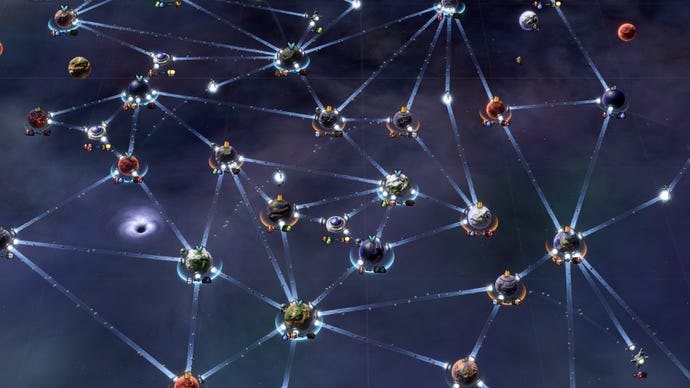
That time limitation is important, because it prevents the game from bogging itself down. Each run takes between 45 minutes to three hours, depending on how much you enjoy extended marble mulling. I like to hover over every decision cluster for a good while, testing out different possibilities using the exemplary and forgiving UI that lets you reverse unwise decisions - as long as you haven’t uncovered any new information. Then, once I’m satisfied I’ve found not just a good solution but the right one, I’ll pounce.
Plopping down a final slipway, one that makes your empire burst into bountiful, platinum-tier planets along a chain reaction of contentment, is one of the most satisfying accomplishments in videogames. It’s like watching one of those videos full of things fitting perfectly into other things, or finding a fiddly checkmate. It is better than doing a Tetris, even an artfully engineered one with a saved-up long bit. I implore you to go ponder some orbs.
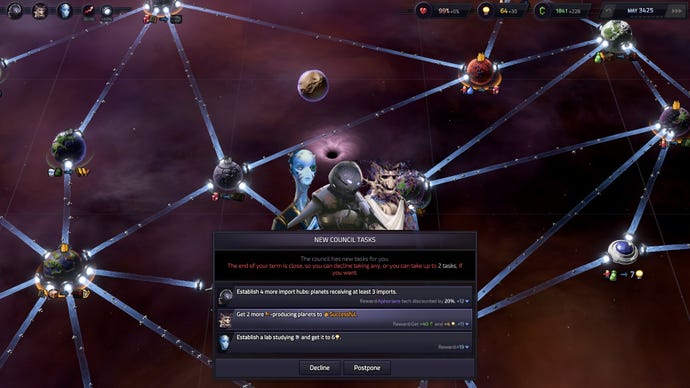
Ollie: Slipways is incredibly elegant. Not just in its presentation but in the organic problems and solutions that arise as you expand your interplanetary empire. So many times throughout my various hour-long playthroughs, I've felt like I've slipwayed myself into a corner. I'd look at my tangled web of planets and their desperate cries for more water or bots or biomass, and I'd wonder at how in the world things went downhill so quickly, and how I could possibly prevent the total collapse of my once-promising economy.
But in almost every case, the solution would start to present itself over the next few clicks. I'd send out a probe that would reveal a nearby planet with exactly the right set of imports and exports to resolve the crisis, or I'd research a technology that allowed me to demolish the useless planet that had been blocking that all-important slipway path between two far more important worlds. Slipways frequently tiptoes towards the line between challenge and frustration but never actually steps over. The solution may not always be in view right away, but rarely will there not be one waiting for you in a few turns' time.
14. Dorfromantik
Katharine: Dorfromantik has been one of the most pleasant surprises of 2021 for me. I've sunk more hours into this relaxing pastoral puzzle game than anything else I've played this year - and that includes a compilation of two great big whopping Ace Attorney games. It released into early access at the perfect time of year, too. It was the end of March, the UK was still grumbling through another grim lockdown, and giving life and shape to tiny towns, forests and golden yellow fields through a random assortment of hexagonal tiles just seemed like the perfect antidote to the ensuing chaos outside.
As I told RPS supporters earlier in the year, the core concept of Dorfromantik is wonderfully simple. Each round starts off with a single tile, and you're then given complete freedom to decide how to use your remaining stack of them to build out your little rural townscape. The more sides of a tile you match to those around it, the more points you get. There's no time limit, either, and the game just keeps on going until you run out of tiles.
The secret to prolonging your Dorf sessions is to complete its various quests - tiles that occasionally say things like, "Hey! I'd like you to build a town with at least 34 houses in it please," or, "I'm a field that's only comfortable with 6 other fields next to me and NO MORE, thank you very much." Combined with your pursuit of ever higher point scores, these quests give Dorfromantik a welcome sense of structure and purpose compared to other freeform puzzle builders (Townscaper, I'm looking at you), and this gentle loop of rotating and slotting cute, colourful tiles into place (not to mention its equally gentle musical score) is precisely what keeps me coming back again and again.

I just love the look and feel of the thing, too. Aside from its bright and sunny colour palette, it's the little details that make Dorfromantik sing. The way smoke puffs out of the little chimneys of certain houses. The lackadaisical lilt of its wooden windmills. The chugging toybox boats that amble through its lakes and rivers. Even the sound of the trains steaming along its completely nonsensical railroads makes me break out in a big old grin, and that's before we get to the ambient wildlife sounds and the animals that gradually populate its forests and woods. Speaking of animals, it's also the perfect game for the times when my cat decides to plonk herself on my tummy and stare deeply into my eyes demanding a chin scratch, as everything can be controlled with a swish and scroll of your mouse wheel. Add a steaming hot mug of tea to the mix to sip while mulling over where to put my next tile and ahhh, bliss.
Dorfromantik has only got better with age, too, despite still being a few months off its full and final release. While the 'classic' high score mode it launched with has lost a little bit of its quirky mystery due to various quality of life updates and more obvious tutorialising, it remains as compelling as ever, especially now developers Toukana Interactive have added even more unlockable tiles and an extra biome to the mix. Plus, the creative mode that arrived in the summer finally lets me indulge in creating picturesque little idylls instead of always chasing after those perfect tile placement points. It's an impressive debut for four game design students, and I can't wait to see what they get up to with it in 2022 with its mysterious new game mode, custom seeds and rulesets, and community challenges. If you haven't yet taken the plunge on Dorf, I can think of no better Christmas game to while away the hours with.
13. Valheim
Ollie: I really didn't expect to like Valheim. In fact, when I describe my experience playing it to my friends, I always say that never have I done such a 180 on a game. When I first started playing, I could see that it was a survival and crafting game like so many others, and the textures were a bit blurry and the combat was a bit janky, and I couldn't really see what had captured everyone's attention. What was it that set Valheim apart from every other survival game?
I realised my mistake as time went on. I was looking for one particular spin on the genre. Valheim doesn't depart from the survival format in any massive and meaningful way; instead, it adds lots and lots of tiny details. Details like how buildings have stability, so you must set your foundations strong if you want to create a bigger house. Or how if you make a campfire indoors without a chimney, smoke will collect in your house and you'll start to suffocate. Or how wooden structures will slowly decay in the rain.
It's not all to do with building, either. The weather and lighting effects are absolutely sublime. I never would have thought I'd end up describing Valheim as beautiful, but it really is. Turns out you don't need high resolution textures for that. And they actually matter, too. During bad weather, birds will land on the ground or on the tops of houses, making them much easier to shoot to gather feathers for your arrows. During foggy mornings, the visibility gets bad enough that it can actually make a big difference to your adventuring plans.
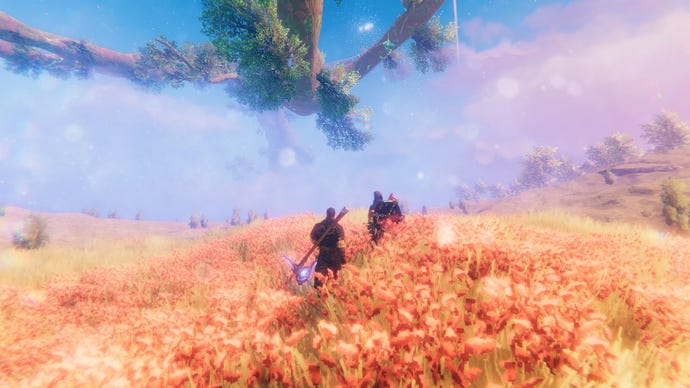
And then there's the water. Oh, this water. Head to one of the hundreds of coasts in your procedurally generated world, and you'll see the waves actually lapping at the shore. During storms the tide will recede far further before throwing itself up onto the land. If you're out sailing (one of my favourite things to do in Valheim), you'll have to pay attention to wind direction and handle massive waves that throw your ship about.
At its core, Valheim is a straightforward survival and crafting game. Build up your gear, fight monsters, build houses, head to new biomes to get stronger resources for even better gear, build more houses, rinse, and repeat. But every part of the game and everything you do within it is well-built, enjoyable, and absolutely brimming with character and atmosphere. And the ease with which you can set up a server and play with friends is an enormous plus point too, because worlds this characterful are always more fun to explore with others. This game has given me hundreds of hours of enjoyment this year playing both alone and with friends and family members, and I daresay I'll keep coming back to it again and again over the years.
Ed: Valheim swung around at a time when I felt rather isolated in my little white box of a room. It was a perfect way to gather some friends I missed and set up a virtual viking clan to stave off the loneliness. Every Friday we’d login and catch up on stuff, even though stuff wasn’t really happening at that time.

Kiryun Kazumor, Sigmund, Ragnar the Red, and Dunder Mifflin. As these clueless bearded men, we’d go from rather tired and weary, to beaming with life. Valheim really isn’t all that forgiving, but we reveled in the hardship. We’d celebrate the small victories with hoots and hollers. First we discovered it was important that the bees were happy. And like babies who test the world with their mouths, we’d punch things just to see what would happen.
Later we’d pelt the earth with our fists in an attempt to plant carrots, which proved more difficult than we could have ever imagined. A half-naked sail helped ease tensions. Eventually, we’d taste victory and enter The Carrot Age. Our clan even adopted a boar and found love.
Chronicling our Valheim antics on RPS has been one of the highlights of my year. Not only did I get to share a great time with some of my closest friends, I could write them into the history books for others to enjoy, so maybe they'd get a laugh or brighten someone's day. I liked the idea that others could feel a part of our bumbling clan if they needed an escape too.
12. Death's Door
Brendy Caldwell: You are a feathered reaper of souls in this Zelda-like adventure, the silent crowtagonist of a light-hearted tale that regards death with a tickled smile. You've got a sword, a bunch of dungeons and a cadre of coy bosses with inviting attack patterns. Off you pop on a fighty stroll through a world of roly-poly baddies and grannies with a severe gaze. In other words, it's Sunday afternoon single-player bliss. In our swirling ecology of battle passes that reward varying degrees of frenzied bulletmurder, it's calming to start a colourful runabout that will ask no more of you than competent swordsmanship and the ability to roll. Well, there's a little more to it than that. But not much.
You can fire arrows, for example, or use a hookshot to close the distance on enemies. Some abilities you don't earn until later, but they come at a fair pace, and unlock new areas as well as making fights against irritable wizards more varied. You'll also need those powers to beat bosses (eg. royal frog, enraged Yeti, disappointed grandmother). Some of these have puzzley solutions, others simply demand dexterity and perseverance.
And it feels good. Sometimes you find a game that doesn't necessarily push genre boundaries but adheres to those boundaries in its own special way. Here you've got a top-down dungeonworld with melee and ranged combat, with a style of movement any Hyper Light Drifter player will recognise. But the rhythm of its fights, the deflecting of bombs, the balancing of sword swings and arrow shots - it all hangs together to create a prime example of taut, focused combat design. That's not even counting the puzzles or the glib comedy of its dialogue.
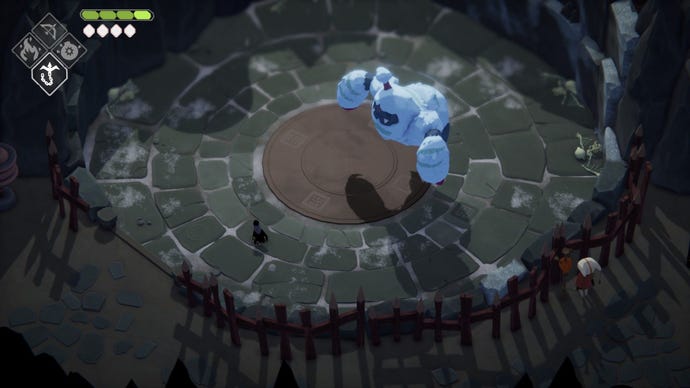
This type of game is rare. I think of it as the SteamWorld Dig 2 phenomenon, when a studio can create an expertly crafted game totally within the limitations of its genre, and make it beatable in just a few days of leisurely play. If games boasting 80+ hours of open world questing are the equivalent of five-season-long TV shows that lose steam after the first season, then Death's Door is a three-part miniseries with good writing and an actual ending.
And that writing really adds something. When bosses die, they are given a short funeral by a masked gravedigger. There's the briefest hint of melancholy to their loss, an admission between jokes that this world is a little less colourful without a jerk like the Frog King in it, even if it is a fundamentally improved place. There is at least one boss that feels faintly tragic, and in a way it would be better if your quest to fix this world wasn't necessary. But the little crow of death is inevitable. In the same way Outer Wilds smiled and shrugged at the end of the universe itself, Death's Door treats individual death as a convivial obligation. Come along, it seems to say, time to die.
Katharine: I came to Death's Door very late in the year compared to Brendy, who did our excellent review of it back in July, but golly, what an absolute gem this is. I sometimes struggle with Soulslikes, no matter how far removed they are from their actual, rockhard namesake, but as I told supporters just the other week, Death's Door is 100% my kind of game. The combat is delicious. Your sword swings and dodge rolls are tight and taut in all the right ways, and bosses are hard but also incredibly fair. It doesn't aim to punish you - it wouldn't have checkpoints immediately before those big boss rumbles if it did - but rather coaxes and cajoles you into doing a bit better next time. There are also plenty of clever secrets to unearth if you want to go looking for them, and gosh, the music is just wonderful. Don't sleep on this one, folks.
11. The Forgotten City
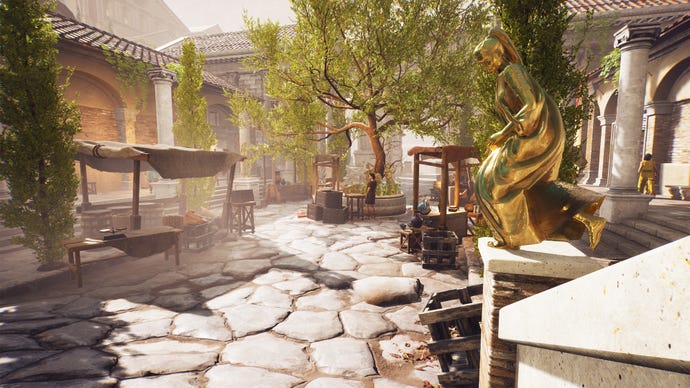
Alice Bee: Boy, Garfield would really hate Mondays if Monday never ended! Somebody called Punxsutawney Phil, and watch out for that first step! Woah, I don't know if we're ever going to see the edge of tomorrow! You enjoying these pop culture time travel references? I have a few of them. The point is, time makes fools of us all, especially if said time is continually looping the same day in a strange, small community of Romans trapped in a sinkhole with the threat of instant death.
The Forgotten City is a real treasure of a detective puzzle game, first incarnated a few years ago as an extremely ambitious Skryim mod, released this year as its own glorious republic. You, an person, wash up on the side of a river and are sent into a weird ruined city full of golden statues. You're then catapulted into the past and discover that this city was once a living place inhabited by a small group of Romans - as in, Ancient Rome Romans. They had to obey the Golden Rule: if anyone committed a sin, everyone would be turned into a golden statue with magic arrows.
Lucky for you, there's a get out of jail free time portal for one person in the form of a portal. This will take you back to the start of the day - provided you can get back to the temple where the portal appears, and dodge the magic arrows that'll statue you up good on the way. In theory, your job is to stop whoever it is that is about to do a bad sin. This involves running around town finding and solving problems before they happen, including deaths, thefts and rheumatism.
This is extremely satisfying. You start to figure out the rules aside from the golden one: whatever you have on you when you travel through time, you get to keep. So if you find a big stash of money you can burn loops on purpose by stealing stuff, and become very rich for other puzzle solving purposes, for example. You'll get the key to a locked house in one run so you don't need to swan dive from a cliff to get into it any more. That kind of thing. The best bit is that once you figure out the solution to a puzzle, you don't have to do it every single time - there's a helpful bloke waiting at the top of the hill every day who will very obligingly do anything you tell him. If The Forgotten City was just a very clever puzzle box, that would be enough.
But it's not just that, because in practise you discover you're being influenced by up to three unknown forces, the Golden Rule basically allows everything up to directly nicking something or throwing a punch, so torture and extortion is fine, and that there's a whole section of this game that's a very unsettling survival horror with a magic bow.
The Forgotten City is so smart, but so compact and lean. It was made by such a small team, but they already knew their limits so didn't over-reach them. Instead they made and achieved something exactly as ambitious as it could be, to perfection. The little town you explore and get to know is actually quite beautiful, and you'd probably pay a mint for an AirBnB holiday there. The characters are as distinct and memorable as the cast of an Agatha Christie murder mystery. The puzzles as satisfying as the very best Lucasarts games. If you like dastardly crimes and weird puzzles, and Roman soldiers with big craggy character actor faces, then don't let this one slip through your fingers.
10. Humankind
Nate Crowley: The thing about a good 4X game (like Amplitude’s Humankind, for example!) is that - theoretically at least - you can play it forever. A 4X is a sort of fractally complex snowglobe, into which you tip a bunch of abstracted-down simulations of historical leaders, or alien warlords, or whatever, before giving it a good shake and… smashing it on your desk while bellowing Oppenheimer quotes? Yeah, sorry; didn’t think that metaphor through very well.
Still, you get the idea. With randomly generated worlds and rivals making for a slightly different challenge every time you play, it doesn’t really make a difference when you’ve seen all the stuff there is to see in a 4X, because the enduring fun is to be found in the combinations of said stuff. Case in point: Civilization 5, which I played regularly for ten years after its 2010 release, despite being a man who finds little comfort in repetition, just because the basic feeling of “playing Civilization 5” never really lost its lustre.
I did stop playing Civ 5 in the end though. And the reason (in what will hopefully appease the annoyance of anyone reading from Amplitude, after I spent the first three paragraphs of this post writing about Civ) was Humankind.
As I said, 4X games are all about replayability; about how long they can hold you off from the realisation that you’re spending a punishingly large amount of time doing the same thing over and over again. And the key to this is the number of variables open for recombination in subsequent games of the 4X in question.

Well, as you might already know about Humankind, it pulls a massive clever in this department, by offering the player a choice of ten civilisations to play as… six times over the course of a game. That’s a neat one million potential combinations, in theory. And almost as many in practice, too. As I play on, I keep encountering situations where civs I’d dismissed as total guff a dozen times previously, suddenly turn out to be circumstantial clutch picks, treating me to a whole new set of toys to play with.
I mean, the mix-and-match thing is an absolute torpedo of an idea when it comes to realism, obviously. Bit weird for a whole civilisation of proud and fearsome Greeks to suddenly decide “we’re Dutch now”, and get massively into the stock market, no? But let us face facts here: none of us ever played 4X games to savour the recreation of history (unless history involves a load of battles I never learned about, featuring infinitely dense mounds of cavemen obliterating battalions of tanks a la Civ 1).
I actually find Humankind’s civilisational identity crises thoroughly endearing. They put the anachronistic absurdity of historical 4X games front and centre, making the whole thing feel a little bit sillier, and making it easier to stop worrying about optimal efficiency and just roll with the punches. It’s one of the reasons why I find Humankind a little pacier than other 4X games, although I say that with the lead-lined proviso that it is still an enormous time sink.
Whether it’ll be another time sink capable of draining my vital forces for a full decade, remains to be seen. Already, I’ve found it has become a game I fancy a solid go at every month or so, rather than a default option constantly gnawing at the underneath of my executive function. But honestly, that suits me down to the ground. It’s like my mate Ghoastus always says, Rome wasn’t built every day.

Ollie: My favourite thing about every Amplitude game I've played has been the music. I routinely listen to the Endless Legend soundtrack while working, and it's long been one of my favourite game scores. But there's just something special about the sheer grandeur and scope of Humankind's soundtrack which has enabled it to entirely usurp the Endless Legend soundtrack as my go-to background music.
On the day of Humankind's release, the devs released five soundtrack videos on YouTube. One is what you might call the "main" soundtrack, filled with the familiar music that plays across all games and worlds. It's absolutely sublime, as you'd expect.
The other four videos are each 2-hour compilations of all the music that was written specifically for each of the 60 cultures in the game. That makes for eight hours (eight hours!) of wonderfully diverse, scrupulously authentic music, the cumulative efforts of goodness knows how many musicians, experts, and fascinating instruments from all over the world. All in addition to the main soundtrack, all with that same calm, soothing stateliness that has made composer Arnaud Roy's previous scores so wonderful. Sometime far in the future, I may eventually stop playing Humankind, but I don't think I'll ever stop listening to the music.
9. Outer Wilds: Echoes Of The Eye
Matthew Castle: Is it against calendar rules to include DLC or expansions? Well, if ever a game taught us the joys of colouring outside the lines it’s Outer Wilds, a game about a time loop and the loopholes that might just knock you out of it.
Even more so than Outer Wilds, Echoes Of The Eye is a story about breaking through and busting out. Its new setting is a doomed spacecraft camouflaged inside an eclipse (those italics don’t do it justice). It may resemble a hula hoop but it behaves like an onion, home to a lot more than it first lets on, and hiding several more layers within that. Just when you think you’ve finally punched through to the rule that can’t be broken, oops, there’s a crack.
Yes, Echoes Of The Eye is an add-on to RPS’s 2019 game of the year. If that’s an unfair advantage, it’s one Mobius Digital doesn’t squander. This isn’t an easy victory lap around the solar system - by this point I feel I’ve squeezed every drop of adventure out of the place - but a self-contained adventure in a new location that answers to the same 20 minute ticking clock as everything else. The challenge in recommending it is doing so without trampling all the surprises. I’ve already ummed and ahhed through 1000 words of vague praise in an earlier feature, and it’s that I’d point you towards if you want to go in truly unspoiled.
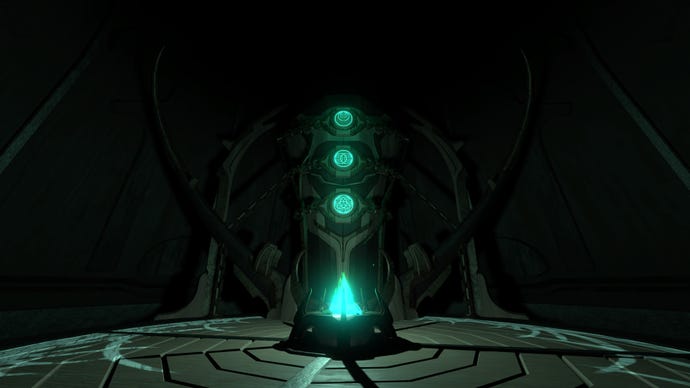
Still here? Okay. The expansion adds a ringworld, a la Halo, but done for real. This is not a sliver of land with an awesome skybox to sell you on the fantasy. When you step into this world and look up, you’ll see the ceiling you’ll be exploring in a few minutes time. Reader, my lip may have wibbled.
That it only takes minutes to circumnavigate the structure is thanks to a river flowing around it. Backwater rafting is a perfect aesthetic fit for a universe where bluegrass music guides travellers between the stars. It’d be a dream holiday destination if it wasn’t for an astonishing act of destruction that drastically alters the landscape at a set point in the loop. Although you’re only one supernova away from enjoying those chilled early minutes again. In a galaxy packed with conceptual brilliance, this is up there.
But it’s the cleverness around, under and beyond the loop that won me over. I think of Outer Wilds as a cerebral Metroidvania: instead of unlocking tools to further your exploration you’re harnessing knowledge. Not just in the sense of knowing what happens when - although that is key to a lot of its looping cleverness - but mastering the rituals and science that govern the world. In the main game this mainly manifested in learning the behaviour of the Quantum Moon, but Echoes Of The Eye goes bigger on these puzzles. This is stuff it would be criminal to spoil, but I guarantee that someone at Mobius is a huge Inception nerd.
And as Inception told us: don’t be afraid to dream a little bigger. In an industry where DLC lacks TLC and expansions favour breadth over depth, here’s a rare riff with something genuinely new to show you, and one that slots perfectly into the whole. I look forward to Mobius Digital’s next game of the year, when they get round to it.
8. Forza Horizon 5
James: Forza Horizon 5 often feels like less of a nice game to play and more of a nice place to be. We all know of power fantasies but here we have something you could call a leisure fantasy, a drop-dead gorgeous sandbox where competition has equal billing with exploration, adventure and the simple joys of just bombing around for the sake of it. The weighty but arcade-leaning driving model makes this a perfectly viable and enjoyable way to spend time, and while it will inevitably put off those who want something more authentic and simlike… sometimes I just want to ramp off a cliff and admire the scenery, yknow?
That said, the events I find myself replaying most often tend to be the least chill. There’s the one where you chase a cargo plane through the jungle. The one where you drift around the lip of an active volcano. The one where you go rallying with a parade float. Even the bread-and-butter road races can come with exciting twists: one marquee event is a one-lap dash around the borders of the entire, massive map, a race that masterfully maintains its tension over the full fifteen minutes it takes in a decent car.
Not that this game would even think of rubbing a loss in your face. From the perma-enthusiasm of NPCs to the kaleidoscope of high score and XP reward alerts popping up on the HUD, the tone of Forza Horizon 5 is unrelentingly upbeat. Even the moment you first take the wheel, when an intro cutscene transitions into your car airdropping onto the aforementioned volcano, is accompanied by a musical drop from the soundtrack.
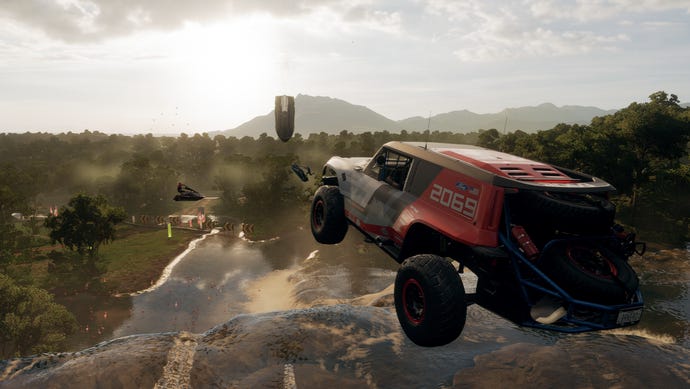
Such constant affirmation that you’re a proper legend, mate would be grating in most games, and honestly it’s treading a very fine line here as well. But for me, it mainly contributed to that feeling of Forza genuinely wanting me to be there, and to have a good time. Judging by the lack of microtransactions (beyond a one-off “VIP Membership” upgrade for a handful of bonus unlocks), there’s no sinister ulterior motive for this approach either. If anything, the free unlocks come thick and fast enough that grinding events feels unnecessary, at least for building up a versatile car collection.
Ah yes, the cars. There’s loads. I’m not a Car Person so couldn’t tell you if, say, the turning circle of the game’s Lamborghini Urus is faithful to that of the real thing, but with just over 500 models it’s impressive how distinct each one feels from the last. Picking the right wheels for the right event can save you some handling or acceleration woes, though again, Forza Horizon 5 wants you to have a good ride above all else, and knows the difference between rewarding motoring knowledge and enforcing it. Rival cars, then, are assigned to match up fairly with whatever you choose, preventing you from picking yourself into an inevitable loss. Plush hypercars also have more off-road capability than might be expected, though also within reason – I haven’t yet managed to scale a 60-degree incline in a McLaren.
Still for the most part, Forza Horizon 5 responds to the question “Can I try this?” with a beaming “Sure!”
“…and you’re cool for asking!”
7. The Great Ace Attorney Chronicles
Rebecca: With apologies to my real-life loved ones, no one person has made me as consistently and uncomplicatedly happy this year as Ryunosuke Naruhodo, protagonist of The Great Ace Attorney Chronicles. In a year of ups and downs, it was somehow comforting to start up this game and see Ryunosuke's sweet, nervous face, and know that he was having a really rough go of it too. The lad's a walking disaster area, and I love him for it.
I knew from the outset that I was going to really enjoy The Great Ace Attorney Chronicles — after all, it's got Sherlock Holmes in it (sorry, Herlock Sholmes), and that's all I need from life. But I wasn't expecting this to become quite possibly my favourite Ace Attorney game yet. Prequels are funny things, and it can sometimes be hard to care about the protagonists when the ending is set in stone.
As you have no doubt already gathered from my adoring preamble, this is absolutely not the case here. The Great Ace Attorney Chronicles takes the art of prequel-ing to an extreme by pulling the action 120-ish years into the past - hence the presence of Sherlock Holmes. This is good for a couple of reasons: there's no barrier to entry for players who are brand new to Capcom's courtroom lawyer 'em up; while returning fans can enjoy adventures that are tangentially connected to the main series, without there being a lot of established lore that needs cramming in.
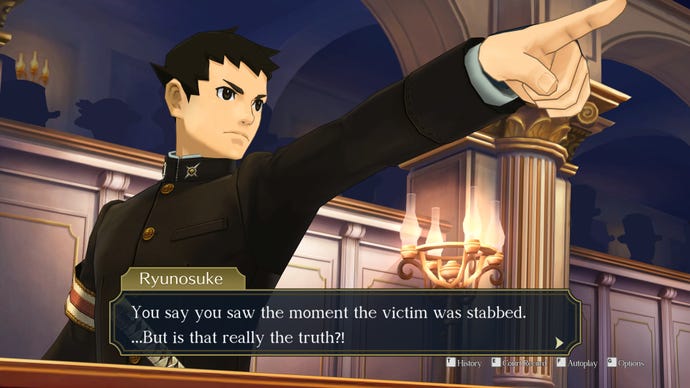
This setting justifies its connection to the other Ace Attorney games by making Ryunosuke an ancestor of undefined remove from main series protagonist Phoenix Wright (who's known as Ryuichi Naruhodo in the original Japanese). I will confess that I didn't come into The Great Ace Attorney Chronicles with many expectations of Ryunosuke one way or the other. This was because - incoming heresy alert - I don't generally find Phoenix to be the most interesting part of the Ace Attorney games, and Ryunosuke was initially portrayed more or less as Phoenix's identical relative, albeit with moderately better hair.
But, to my surprise, I found Ryunosuke a really easy character to get invested in. It started with how worried he looked during his first court appearance: a charmingly animated mess of trembling hands and nervously darting eyes. Granted, he was the defendant rather than the lawyer — a circumstance that was evidently as surprising to him as the protagonist as it was to me as the player. Ace Attorney leads inevitably end up on trial for a crime they didn't commit sooner or later, but they usually get at least a couple of chapters' worth of warm-up first.

But no, poor Ryunosuke gets thrown in at the deep end, and spends the rest of his 60-hour hero's journey (spread across two games, I might add) more or less running to stand still, as perhaps the only character in Ace Attorney history to be properly attuned to how little sense his world makes. The setting may be 1897 but that's the most 2021 mood I've seen captured in video game form, which alone qualifies it for GOTY status if you ask me.
Don't be fooled, though: unexpectedly relevant themes of existential bewilderment aside, this game is quite ludicrously cheerful. It's got that Agatha Christie vibe of "yes, there's been a murder, but we're here to have fun after all". The writing's hilarious, the whole production is gorgeous, and there are at least 200% more adorable kittens than the plot really calls for. The Great Ace Attorney Chronicles sets out to make you smile, and no matter what else I had on my mind, I can't think of a single time it didn't succeed.
Katharine: It still feels incredible to me that out of all the games Capcom's made over the years and the series that have come and gone never to be seen again (RIP Ghost Trick), it's their legal drama about a defence lawyer that's still going strong after 20 years. 20 years! That's a long time in video games land, but as The Great Ace Attorney Chronicles amply proves, there's still plenty of life left in the wider finger-pointing Wright dynasty, and I fully endorse Rebecca's assertion above that this is easily the one of the best Ace Attorney games yet.
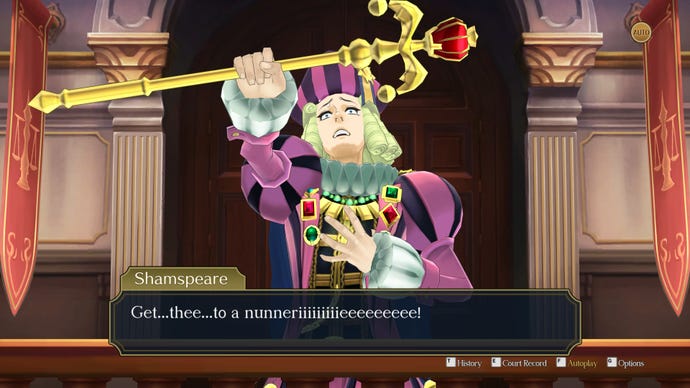
Despite being set over 100 years in the past, this is the most modern-feeling Ace Attorney I've ever played. Its animations are gorgeous, the mysteries are absolute bangers, and Capcom's localisation team have absolutely 0utdone themselves on translating series creator Shu Takumi's script as well. The pun work (both written and visual) is exceptional, and I'm not going to lie, that wordplay is 95% of why I play Ace Attorney games in the first place.
It's also incredible to me that Capcom are still bundling this and the Ace Attorney Trilogy (which is a PC port of the HD versions of the first three AA games) together for just £40. That's incredible value for money for five of the best visual novels you'll ever play on PC, and just another £8 on top of what you'd pay for Chronicles anyway. It would be a crime not to get both if you're new to the series, and trust me, you don't want to be on the wrong end of this judge's hammer, no sir.
I rest my case.
6. Hitman 3
Matthew Castle: This makes it three for three, where Hitman and the RPS advent calendar are concerned. How very predictable. That’s three times we’ve put the same old sneak-and-snuff under the Christmas tree - I’m surprised you didn’t clock that telltale bald head shape under the wrapping paper on day one. (And no, I didn’t leave the price tag on - that barcode’s part of him.)
But Agent 47’s repeat appearances make sense if you consider the ‘World Of Assassination’ trilogy less a series of individual games and more an evolving project. You could call parts two and three expansion packs for 2016’s Hitman, but what other expansion pack drags previously made levels kicking and screaming (or, more fittingly, limp and subdued) to its newly improved technical standard? This is the most compelling bit of new Hitman for me: that each new outing is an excuse to revisit those older, brilliant levels with updated visual gloss and behavioural tweaks.
And besides, each adventure does have some flavour of its own. Part one was deep, part two was wide, and part three is… weird? It has the sandboxes packed with murderous potential, but masks them behind odd structural twists. One level locks a target within a murder mystery. Another pits you against a squad of anonymous thugs you have to sniff out in the din of a rave. Later you’re playing rival facilities against each other or assisting an AI helper - the latter in a trip to an Argentinian vineyard that can end with a swooningly sauve moment on the dance floor.
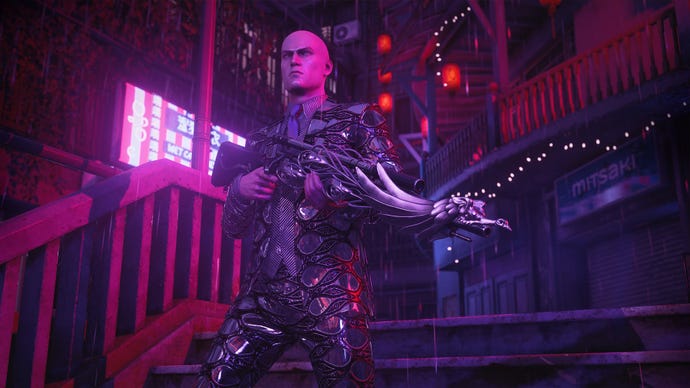
These beats are maybe not what you play Hitman for; this is a series celebrated for its agency and experimentation, rather than baked in heroics. But aside an overly cinematic blip at the end of the campaign, these locations present the best of both worlds. Poisoning a cabal of illuminati types in Mendoza is pure James Bond - a one and done thrill anyone can enjoy - but once you’ve followed the choreographed steps you’re still allowed to freestyle with a grape crusher. Remember: not everyone knows how to Hitman, and this feels like a good attempt to tempt people towards the light.
Not to mention the simple pleasure of embarking on another world tour with the best environmental artists in the business. Hitman may be a stealth game out of professional necessity, but there’s also a part of me that wants to take levels quietly so not to disrupt the perfect worlds. Who wouldn’t want an all access pass to a Dubai skyscraper or the rooftops of Chongqing? After nearly two years of staying home I refuse to feel bad for wanting to stick my head behind the curtains. My home office doesn’t even have curtains. When the sun hits the right angle it becomes a real problem. I can’t even see what I’m typing right now. I hope I spelt Chongqing right.
And all this before Hitman 3 grows again in 2022. New levels, new modes, not to mention VR. Yes, now you too will be able to experience first hand what it’s like to bowl an Expired Can of Spaghetti Sauce at some deviant’s skull. Agent 47’s spot on next year’s advent calendar is practically guaranteed.
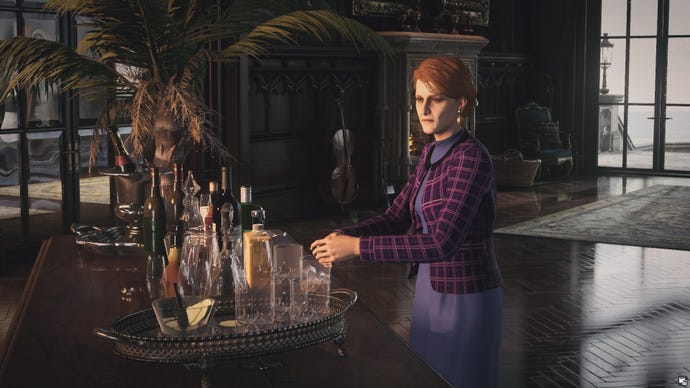
Alice Bee: I couldn't let this one go without expanding more on that murder mystery level Matthew mentions. Dartmoor is a perfect Agatha Christie pastiche, a weird posh person's manor filled with weird posh people who all hate each other - and one of them has already been murdered! It's the kind of level you'd only get in a Hitman game.
Your job is to go in, kill your target (the matriarch of the poshos) and get some info, and obviously there are a few ways you can do this. Dressing as an undertaker and shoving her into an open grave is a particularly grim delight. But the cleanest route, if the maximum effort one, is to replace the detective there to solve the murder and solve it yourself. You have to interview suspects and put clues together, find hidden passages and read secret letters, figure out what the butler did... suddenly Hitman 3 just becomes a mystery vignette with its tongue lodged so firmly in its cheek it'd need surgical intervention to remove it. It's completely delightful.
Katharine: I'm not gonna lie. I never got past the first level in Hitman 3 because I spent too much time staring at its incredibly polished floors. Okay, that was a lie. But I did hold back on playing too much Hitman 3 this year, because hot damn, I really can't wait for that ray tracing and VR update coming early next year. Hitman 3 is already one of the best looking games of 2021, but add ray tracing into the mix as well? Now that's a real beaut of an elite murder sim right there, and I cannot wait to play it all over again in 2022.
5. Psychonauts 2
Hayden: As a kid, my favourite part about going on holiday was arriving. We’d pull up to a cottage and I’d have no idea what was inside. It looked cosy and warm but felt strange and alien - and it was ripe for exploration. I never knew what was waiting around each corner, but I was always delighted with what I found.
Psychonauts 2, the action-platformer sequel to Tim Schafer’s 2005 cult hit, elicits the same feeling. It gives you some cosy platforming mechanics that you’ll know and love, and sends you into a cornucopia of creative levels that you could never have imagined. As Raz jumps between various minds on his journey to reunite the Psychic Six, the team at Double Fine reintroduce you to a weird and wonderful world that instantly feels like home.
The story of the Psychic Six and Raz Aquato’s quest to bring them back together is told in fun and whimsical ways, but it’s always clear that this is an exploration of the grief, heartache and pain that pulled the team apart. These issues are handled with nuance and delicacy, but it offers a profound backdrop that will leave you thinking for hours if you dig a little deeper. On the surface though, Psychonauts 2 is an eccentric adventure through the human psyche that will fill you with childlike curiosity as you dive into every level.
Rather than overwhelming you with massive skill trees that you could navigate for hours, Psychonauts 2 has a few core powers that you slowly upgrade. As you progress, each level will show you new ways to use these powers, expanding your arsenal while retaining the simple controls that make Psychonauts 2 so accessible.

Take the telekinesis ability, for example. This is one of the first powers that Raz learns. Early on, you can use it to throw objects at your enemies, a simple way to fend off the Censors and other baddies you’ll encounter. As you start to fight larger enemies and bosses, you’ll find yourself catching projectiles in mid-air and flinging them back with a vengeance. A few hours later, you’re running around a frantic cooking game show in which the audience are the ingredients, using telekinesis to carry them around an obstacle course filled with trampolines and grind rails. And despite the grief and sincerity at the hear tof the game, with each mind Raz entered, I found myself descending further into a rabbit hole of hilarity.
Whether it’s the unpredictable chaos of every mission or the many jokes spouted by a rambunctious cast, Psychonauts 2 constantly invented new ways to make me roll with laughter. Whether it was at the well-placed one-liners from the other Pyschonaut interns, or the meandering rambles from the ancient members of the Psychic Six as they recount their past tales, wow, did I laugh a lot.

I blazed through most of these missions in a weekend, so it was all over in a flash. However, this short journey was one of the sweetest this year. Few games have left the same mark as Psychonauts 2, which parades its blend of simple mechanics and wacky wonders around in my mind even months after the credits rolled. Raz spends most of his time leaping in and out of various heads, but he got stuck in mine, imprinting the memory of psychedelic set-pieces and endless laughter that I look back on fondly.
Alice Bee: Psychonauts 2 manages to walk the line between wacky slapstick and srs emotions, and it's very impressive. Raz is a cute lil fella, and you really want him to be a successful field agent for the Psychonauts. But what I remember most from playing Psychonauts 2 is the look of the thing.

The mind-worlds you explore are just so wonderful. It feels like, for every level, the designers managed to think totally outside the box, throw every weird idea at the limits of their imagination at the wall, and then pack it all back inside a box (specifically: the black box that makes things appear on my screen) to create a cohesive experience. The levels are so saturated, with colours, design flourishes, new ideas. It's enough to make your own dull grey mind feel inadequate.
It's impossible to pick my favourite level. Is it the one where a town during a tidal wave is imagined as the hair sweepings on a barbershop floor? The Yellow Submarine-esque magical wonderland of eyes and flowers? The library full of 2D paper characters come to life? Or maybe the dentists office with walls made of teeth and flesh? Ah no, it must surely be the flooded garden full of booze bottles? And yet there's also the hospital casino full of neon lights...
Katharine: I'm still creeped out by the teeth, to be honest.
4. Resident Evil Village
Ed: I don’t like scary games. I don’t like being scared. Wait, hang on, I do? Before I paid a visit to Resident Evil Village, I’d convinced myself horror wasn’t for me. I mean, I watched the Woman In Black starring Harry Potter and nearly had a heart attack. But having set foot in a big lady’s mansion, I realise that I like the tension. That prolonged clench of the glutes. Although I’d say I like Village’s brand of horror more. Too much clenching is bad.
Resident Evil Village sees you step into the hands of Ethan Winters, an unintentionally hilarious bloke who’s just had a really tough time fending off a crazed family in Resident Evil 7. After said fending, he’s finally happy, settled, and his hands look soft. That is, until things happen and he awakes in a snowy village filled with snarling werewolves. This man literally cannot catch a break.
But it makes for good entertainment as Ethan stumbles into the warm, yet unnerving embrace of a mansion. It’s not long before you meet its towering owner Lady Dimitrescu, who isn’t thrilled that you’re trampling all over her expensive rugs. What ensues is puzzle solving and monster slaying, sandwiched by frantic escape sequences where Lady D is actually just walking at you slowly - but it’s proper intimidating as a result.
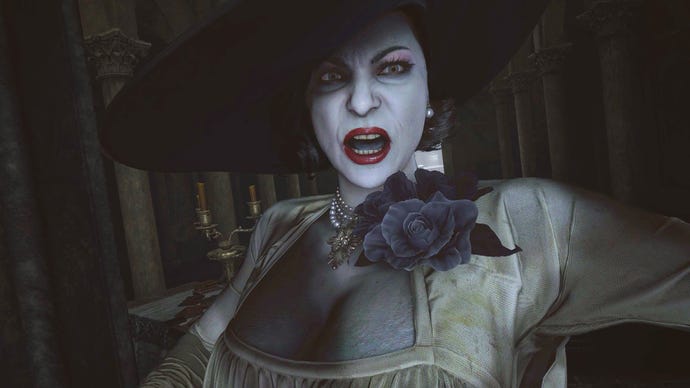
After you burst out of Dimitrescu’s clutches, the game opens up. The village becomes a hub space that evolves as you explore. One that’s filled with hidden treasure and locked doors that hold secrets. Werewolves and golden fish. Jump scares and bush rustles. Suddenly, multiple paths lead to eerie new locations, each with their own theme.
One of which was a doll’s house that had me whimpering in a corner. In this section Resident Evil Village morphs into a psychological terror-fest that toys with you for a couple of hours, and I reckon Katharine best sums it up as a monstrous lovechild of PT and Resi 7's Testing Room where that lunatic Lucas hangs out. Village's other areas aren’t nearly as frightening. In fact, the game devolves into Call Of Duty: Village as you reach its conclusion. In my review, I struggled to get to grips with the tonal shift, saying, "I just couldn't understand why Resident Evil Village was leaning on shoot-outs with enemies, when it clearly knew it wasn't really a shooter."

But now that time has passed, I realise that the game’s shift was kind of genius. I still maintain that it’s a bit jarring going from slow-build horror, to intense psychological stuff, to action. Yet in hindsight, it was exactly what I needed. An entire game bouncing between doll houses would’ve been incredible, but I doubt I would have survived. Instead, the game strikes a great balance between horror and action. The whole time it knows it must cater for fans and newcomers alike, and this self-awareness extends to how seriously it takes itself. The way you pick up objects and how music clangs. The boss fights. The collectibles. Just the slight zaniness of it all. It’s not afraid of just being a good video game.
Speaking as someone who never thought they’d get through such a thing, Resident Evil Village is easily one of best games I’ve played this year. I’ve been introduced to a series and a story I want to explore further. And above all, I’ve lived to tell the tale.
Alice Bee: Shout out to Ethan's hands, though. Between this game and what happens in Resi 7, they're the real MVPs.

Hayden: I’m sure Resident Evil Village will go down as a modern horror classic. Ethan Winters collects a bunch of boomsticks as he explores the titular village, but tension still permeates every room you enter. You’re always aware that, no matter how many shotgun shells you’ve saved, some towering feral beast could come crashing through the wall and mess you up at any second. Even when armed to the teeth with guns galore, I can’t help but cower in the corner and pause the game to take one more anxious breath.
Resident Evil Village is filled with horrors. It delights in making you squirm and squeal as you explore every nook and cranny. As Ed mentions, locales like the grandiose halls of Castle Dimitrescu and the dark depths beneath House Beneviento are locked, loaded, and ready to scare.
Yet, beneath the horror, Resident Evil Village is a sight to behold. As I gaze upon the silent village from a castle window, I can’t tell whether I’m glued to the beautiful vista ahead, or just trying to bask in the momentary escape from heart-pounding fear. Even the blood-stained snow glistening beneath the moonlight is eerily enchanting. But, like the mystifying woods that surround Castle Dracula or the lush landscapes of Midsommar’s rural Sweden, the beauty lulls you into a false sense of security.

Of course, it isn’t all jump scares and screams. You do get to use those guns a lot, especially as it picks up pace in the second half. But, where Ed felt at ease in the chaotic action-thriller that Village becomes, I found that the true horror always claws back out. When it does, it is oh-so-scary, even more so because of the pseudo-bravery you develop while fighting.
Occasionally, you’ll find yourself kicking ass and ploughing through hordes of werewolves or soldats. You’ll start to feel confident. Barrelling through corridors, you blast foes at every turn. Then, as you approach the next door and burst through, nightmares leap from the shadows and bring your inflated, horror-defeating ego crashing to the ground in a startled panic of sweat and shivers. With that, you’re back to hiding in the pause menus as you convince yourself to keep playing. Don’t worry, you’re not the only one.
Katharine: Like Ed, I've never really been one for horror games, but Resident Evil Village is just the right blend of daft, over the top scares. I love a good power curve, and that transition from full-on fright fest to an unstoppable, shotgun-pumping action man is something I crave and hunger for in a game like this, almost as much as Lady D loves a good, full-bodied glass of the red stuff.
The village itself is a fantastic location, too, providing some much needed relief after the claustrophic corridors of its main levels. Despite being ravaged by werewolves and goodness knows what else, I can totally see it as a functioning town, with its winding streets, reservoir, factory and local manor houses, and I hope its mysterious, upcoming DLC will take us back there to a time before everything starts to hit the pan. This wider, overarching sense of place is something I've missed from more recent Resident Evil games, and gives it a creative freedom you just don't get from some of its single-setting entries. It's also a fantastic-looking game in its own right, too, and is easily one of the best ray tracing games I've seen so far. The extra technical effects just exude atmosphere, and the best part is it's not a complete beast to run either. An incredible achievement all round.
3. Wildermyth
Sin Vega: Seeing this succeed has been the highlight of my year. Not just for inflating my ego, because I've been championing Wildermyth for years, but thinking about the hundreds of thousands of hours it means people have enjoyed with this absolutely phenomenal game.
We celebrate many games as "story generators", a phrase that could be mistaken for synonymous with "sandbox" given how often they coincide. There's an innate conflict between firm, writer-led narratives and dynamic, interpretive, user-driven ones. It wasn't until I played Wildermyth that I really believed the two could be combined so beautifully. Each of its main campaigns has a base story, with events mostly bookending chapters while you fill the middle with fighting and subplots. Along the way, your people will play out side stories to fill in the narrative of their lives. It's collaborative storytelling, in which each actor is a combination of randomly generated elements, excellently written personal events, and your actions and interpretations.
More than any game since 80 Days, it understands that grand adventures are filled with smaller moments. Most involve fighting, because that's what classical heroes do. But you'll also name a village, argue about songs, stumble across an ancient creature, flirt with a cultist, run out of supplies and try to catch a fish. Everything defines your characters as they grow from fragile nobodies to experienced, scarred, and often heartbroken heroes who you really feel have earned the tales others will tell about them.
Its excellent writing is sometimes poetic, often funny or silly, and happens to align with something you perceived about your fave uncannily often. There's one side story where two of my team visited an old friend, only to find her in mourning for a lover who'd suffered with a chronic illness her whole life. This was no huge dramatic crescendo or quest nagged into my journal. It had nothing to do with anything, except for those three old friends. For all its magic and bloodshed, Wildermyth gets that good stories are about people.
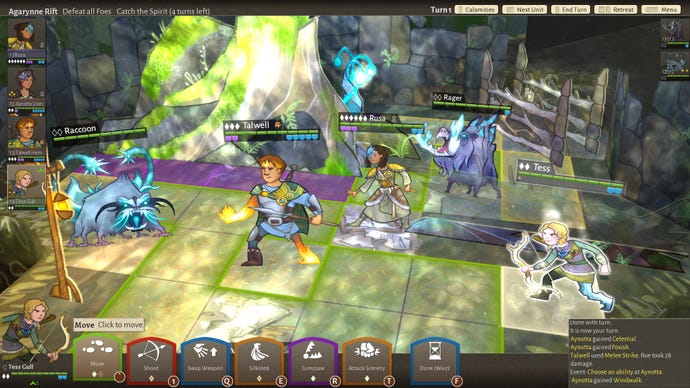
But it's a solid, innovative tactical game too. Up the difficulty just once and flanking and stealth become critical, and the value of each weapon becomes clear. Even relationships become tactically relevant; I had one quartet of youngsters who appeared weaker than their elders, but were such close friends and lovers that they were near untouchable if they stuck together. The semi-random options upon levelling encourage you to pick skills based on personality and lived experience, and to experiment and adapt to changing circumstances, using your wits and cunning over raw power or dull number-crunching (and even that is an option if you go for the hardest modes. Pro tip: never let the Thrixl get out of hand).
Magic users are particularly excellent. Their powers are intrinsically limited to what's present on a map, turning something as nondescript as a tree or a flag into a pivotal tactical element. There's no one size fits all. Apparently weak powers and items can combine into great ones, and underperforming fighters have their moment of glory. Even when someone dies, you can keep them for future games, removing the reluctance to use your best ones in case they get hurt, and giving C-listers a second chance to win your heart.
Above all its excellent tactics and all my gushing about narrative design, that's what makes Wildermyth really special: it makes room in your heart for memorable characters and moments of your own.
2. Deathloop
Brendy Caldwell: Deathloop's kick is sublime. Colt's various powers in the timeloop shooter are nice and all, but his powerful hoof grants you free kills all day, every day (same day). It is one of the most cost-effective bootheels this side of a New Rock shoe sale. It also encapsulates everything I love about Arkane's wackiest outing yet. The grim-faced gloom of Dishonored is discarded for an upbeat, jazz-dunked immerse-o-shoot where stealth is no longer the primary means of attack. You get caught sneaking behind a crate in Deathloop? Time to snap a neck, fill two faces with buckshot and punt the final guard off a cliff.
One of the earliest abilities you get is the double jump, which says everything really. If there's a mechanic in games more emblematic of carefree movement and unrestrained chaos, I don't know what it is. Later you get the ability to fuse enemy minds, so when one baddie is shotgunned in the belly, two of his nearby mates will die from the sheer violence of psychic empathy.
And you'll really want to kill these chumps. The principal antagonists of Deathloop's wintry Blackreef Island are, uh, complicated people. They are corporate sleazebags with an unstoppable urge to be liked. Egomaniacal artists entwined in a relationship that could only be more toxic if they were dating a drum of sludge. All of them are caught in a temporal anomaly that sees them unknowingly repeating the same day over and over. These people are infinitely insufferable. Imagine if the influencers and start-up bros responsible for Fyre Festival never left that island in the Bahamas and became crazed supervillains. That's basically Blackreef.
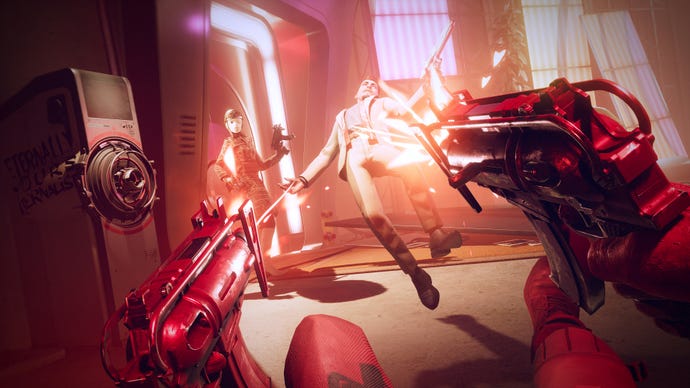
Arkane long-timers might have beef, I concede. Some of the complex interactions between powers, weapons and the environment that you find in Dishonored games won't appear here, thanks to the shaved-down menu of abilities. But for an enthusiastic first-person-shooterist, less is more. I've long thought pausey wheel menus are a flow-crushing plague on game design and exist as an imperfect solution to the pocket-full-of-guns problem that wouldn't exist if you just, you know, held fewer guns. Deathloop gives you fewer guns, and fewer powers. But the result is more impact.
Take the Strelak Verso, a pair of handguns that can be dual wielded or clicked together like violent Lego to become a burst-firing rifle. Or the Fourpounder, a bucking pistol with the clean, polished geometry of the massive autorevolvers in the movie Looper. You can find one of the latter with bullets that leave a cloud of toxic, explosive gas and it is excellent. But you can get just as much mileage out of the spider-like proximity grenades, or the hackable, movable turrets.
In short, there's a lot of shooty shit to do. And when you run out of bullets? Well. Polish up those Doc Martens. In Deathloop, you can really kick ass.
Rebecca: Fair to say that I am that Arkane long-timer Brendy mentioned: Prey and Dishonored are both up there among my favourite games. If you want a 45-minute uninterrupted monologue on why it's mandatory to play the Daud DLCs before tackling Dishonored 2, or how Prey's criminally overlooked Mooncrash expansion was by itself one of the best games of 2018, I'm your gal.
So of course I went into Deathloop expecting to like it. But what I didn't expect was for it to show me something I never realised those previous games had been missing: a good sense of humour. Sure, there are funny asides in the lore and background of Dishonored and Prey. They just never really extend to the characters themselves, who are all (understandably, but still) quite deadly serious about the situations they find themselves in.

Deathloop, on the other hand, never fails to see the funny side. One of my favourite animations in this game plays at the end of a Julianna invasion. She and Colt can go for a fist bump, only for the winner of the match to pull back and do a nyah-nyah face at the person they just gleefully murdered. Just try picturing Corvo Attano or Morgan Yu having that much fun. You literally can't. I'm not saying this inherently makes Deathloop better than Arkane's other games, but it definitely sets a vastly different tone.
The Dishonored games in particular make a point of guilt-tripping you every time you take the lethal approach to a problem, especially if your victim was clearly just an ordinary mook doing their crap job. But in Deathloop, until you reach that final loop, you know that everyone you hurt is going to wake up again this morning like nothing ever happened. So, in a break from Arkane tradition, you're positively encouraged to go about your business with a clear conscience. Just really let yourself live in the moment and enjoy those ragdoll physics as you boot yet another Eternalist off a cliff edge and into the sea.
Imogen: I will attempt to refrain from reiterating how amazing Arkane are at making stealthy murder 'em ups, because everything I'd want to say has been well-put already. So instead, I would like to highlight how amazing Arkane are at creating pure style. The main soundtrack gives me so much joy to listen to, the original song Déjà Vu is like listening to a Bond theme. Then you have the absolute fashion icons that are Colt and Julianna. I've written about it before, but their outfits are a delight to look at. Whenever particularly well-dressed Julianas invade my game, I watch in hope that they don't have the invisibility power; I'd much rather this fight be a fashion show. Arkane's art department really went all-out in making this game look and sound absolutely gorgeous. Even if you don't play it, I implore you to watch some of its cutscenes, listen to its music, or browse through its concept art.
1. Inscryption
Alice Bee: Looking back at some of our other game of the year games, it's not really a surprise to see Inscryption nabbing the primo spot on the Calendar this year. It's a very us kind of game: weird, dark, interesting, innovative. A deck-building game that is both a great example of the genre as well as a subversion of it. A puzzle game that does weird, unsettling things. A story game that breaks the fourth wall. A lonely cabin with a stranger challenging you to play a game against him. But where are you? How did you get here? Why is that one card talking to you?
I'm still not very good at Inscryption. I'm not great at card battlers generally because I'm too impulse-driven to play strategically, to build up plans with a pay off far in the future. All my RPG character builds are based around how much damage they dole out. But Inscryption's card game is really only a small part of it, and it's surprisingly forgiving. There are weird and horrible ways to win that don't involve playing. And losing is all part of it too, of course. Unpleasant, but sort of necessary to experience.
If you played Daniel Mullins' previous games (Pony Island and The Hex) you'll be slightly more prepared for Inscryption, but you still won't know what to expect. Because sometimes you have to look up from the game on the table in front of you. And that can be really horrible.
Alice0: I think I'd be perfectly happy if Inscryption were smaller and focused on the first section. I might be happier, even. While the twists and turns and growths are nice and all, the opening is so strong that the rest feels anti-climatic and starts to drag. Good as Inscryption is, I think I'd remember it more fondly if the opening section were slightly longer then credits rolled. It's good, mind.
Ed: Inscryption is special. As someone who also often lacks the patience for numbers on cardboard rectangles, this is the only card game that’s hooked me in, and for a simple reason. Namely: because it feels really good to play. Not so much the rules – although they're still quick and snappy and good – but more in the physical sense. You’re forced to play a game of cards in a dark cabin against your own will, which is a creepy premise, but it’s your relationship with these cards that brings the uneasy atmosphere to life. Some cards plead with you for aid, while you mangle others into abominations. Sacrifices must be made, mate, sorry. And at times, you must get up from your table to fetch things for your crazed master/enemy.
Inscryption offers this sense of presence, of actually playing cards that you’re going to struggle to find anywhere else. And where else would you rather be at this festive time of year, than in the company of some murderous eyes and massive hands?

Imogen: Inscryption has lots of layers. The first is a nice coating of cards, and beneath that is a creepy escape room. That's all you should really know before you play it, because when you go deeper, the game opens into something new entirely. And while, on a surface level, these things are all very fun, it's the little inconsistencies and eerie snippets within these layers that intrigued me most - a jar of ominous goo, some oddly placed binary code, off comments from your captor that suggest even they're confused about part of this situation.
For exactly this reason I insisted on having a notepad next to me the whole time while I played. I kept track of the weirdness, those tiny details that I was sure might crop up again somewhere, explaining something. After finishing the game I was left with a page of notes that didn't actually mean much, and only a few of my clues were of any help in the end. I've played it again since, too, looking for more answers in-game, and found a couple of bits I missed, but certainly not all of them. But that's so intriguing. For the first time in a while I feel no compulsion to Google what I've missed, I want to find secret stuff myself! If there are even any secrets left? The unknowing just makes it all the more exciting.
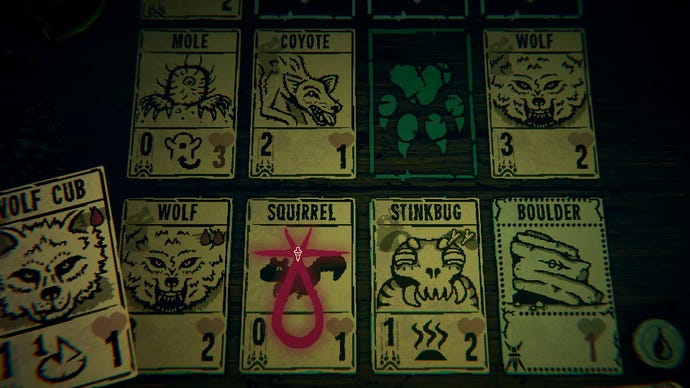
Katharine: The first time I played Inscryption as part of the October Steam Next Fest demo bonanza, I knew it was something special. In some ways, this wasn't entirely surprising to me, as both of developer Daniel Mullins' previous games, Pony Island and The Hex, had been right up my street as well. But as Alice Bee mentioned above, even this affinity for all things Mullins didn't really prepare me for quite how deep Inscryption goes down the meta-narrative rabbit hole, and I truly loved every second of it.
2021 has been an odd year for games. With many of the big blockbusters either falling short of expectations or slipping into next year due to further pandemic-related delays, that feeling of being constantly surprised and delighted by what I'm playing has been in short supply this year. In some ways, it's been a great year for indies to take centre stage, but even some of my favourites from this year, such as Chicory: A Colorful Tale, Elec Head, Ynglet, Mini Motorways, Narita Boy and Olija (which sadly didn't make it into the Advent Calendar this year but are all amazing and definitely worth tracking down), all fell into the same kind of familiar, semi-predictable patterns that have been drilled into us by their respective genres. I would still go to bat for each and every one of them, but Inscryption was the one that made my heart beat that little bit faster, the one where I genuinely didn't know what was going to happen next, and the one that occupied my brain rent-free even after stepping away from my PC for the day. That is exactly what I want from my Game Of The Year, and Inscryption has it in spades.
The card game itself might seem overly simple to hardened deck-builders and CCGers, but the way it builds on its own meta over the course of the game, twisting and subverting its own rules as you peel back the layers, is one of its greatest masterstrokes. It's not just the story that keeps you on your toes, but the card game as well, teaching and then testing you with such a deft sleight of hand-style design that you could almost swear it's a bit magic. Actually, scratch that. It is magic as far as I'm concerned, and a truly worthy winner of our GOTY 2021.
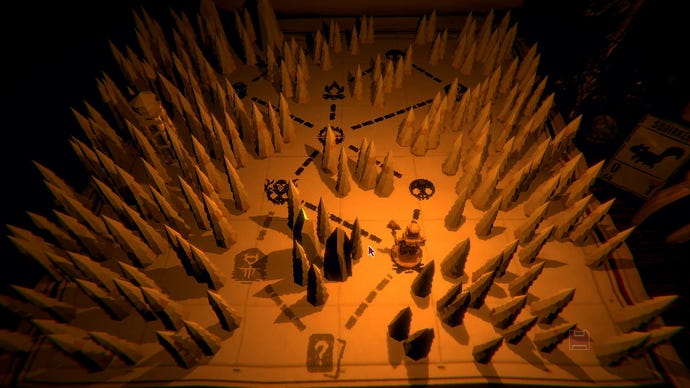
Hayden: Like the others, I knew early on that Inscryption was a special game. The eerie atmosphere and the ever-growing mystery of what the hell is going on and why that card is talking to you create an intriguing and creepy premise in the bestest best way. However, beneath all the tension and terror, Inscryption is a bloody brilliant CCG.
The strength of any CCG is its ability to let you discover synergies between cards. As you open packs (or find them hidden around a murky cabin) you’ll start to see strategies worm their way into your deck. Before long, you'll start realising that if you combine the Squirrel cards with that totem, you can get infinite sacrifices and easily play that Urayuli to really destroy your opponent. Finding those powerful combos is what really makes a good CCG and Inscryption delivers in spades.
However, strategies never last long in Inscryption. As Katharine mentions, there are lots of quick rule-changes or meta-shifts that will annihilate your deck and force you to adapt during a battle. It’s tough, so you’ll lose a lot before you fight your way to the bloody end. Changing the rules and giving the bosses an advantage might even seem totally unfair. Well, it is unfair and Leshy is a bloodthirsty, merciless monster who wants to win. By subverting expectations and actively bending the rules to make the game harder, Inscryption’s CCG constantly evolves along with its narrative to create a genre-defying synergy that I adored.

